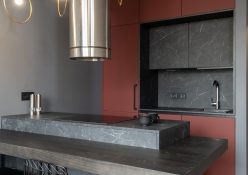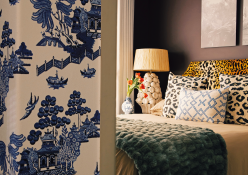Rethink what you know about plastering and welcome it into your home in a new, contemporary way.
The process of plastering involves changing a coarse surface into a new, smooth one ready for whatever covering you want to apply next. Plastering a wall, ceiling or floor can add a unique richness to an area while giving it an elegant and fresh look. LA-based interior designer Leigh Herzig encourages homeowners to consider plasterwork walls instead of paint because ‘beautiful plaster adds so much warmth and nuance to a house’.
Lime Plaster
Also called Venetian plaster, this consists of fired limestone and water, and can be used in thin layers of coatings to give you almost iridescent depth and movement. With an ancient history in Greek and Egyptian aesthetics, it is as popular as ever, and gives the space an earthy and soft appearance while being extremely durable and mould-proof due to its caustic nature.
Best for Interior and exterior.
Cement Plaster
This is a mixture of cement powder and water used for harder and rougher surfaces such as brick and stone. With the ability to mimic and create different finishes and textures, cement plaster is a popular choice for homeowners who want to do it themselves. Extremely waterproof and durable, it’s a great option for just about any room in the house.
Best for Interior and exterior.

Gypsum plaster
Also known as Plaster of Paris, it is formed when raw gypsum is heated to 150ºC to create a powder. Water is then added to form a paste. Usually only used indoors due to its poor water resistance, gypsum plaster is a great option if you want to go the more natural route. Best known for the ability to create intricate ceiling and wall motifs, it has earned a coveted place in our homes.
Best for Indoor spaces with little moisture.
Clay plaster
Clay plaster is exactly that: clay. A versatile subsoil or refined clay that needs no heating or processing when mixed with a binder, it’s perfect for creating a rounder, softer and more historical aesthetic. Not only is it mould- and fireproof, it’s also lower on the budget scale, and releases negative ions, which help us absorb oxygen and increase energy.
Best for Interior and exterior.

For more, page through the January issue of Livingspace.







